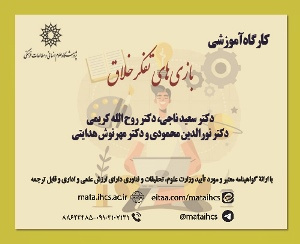تحلیل و بازشناسی نمادگرایانه نقوش مشترک منسوجات ساسانی و آل بویه (مقاله علمی وزارت علوم)
درجه علمی: نشریه علمی (وزارت علوم)
آرشیو
چکیده
استفاده از نقوش و نمادها در هنر ایران که پیش از دوره ساسانیان نیز جایگاه والایی داشته است، تا پس از حکومت ساسانیان و در تمدن و هنر اسلامی ایران نیز در بیان هنری کاربرد بسیاری یافت. این نقوش دربردارنده تجارب اجتماعی، فرهنگی و معتقدات مذهبی دوران خود هستند؛ لذا به فهم بهتر سیر تحول اندیشه های مردم دوران خود کمک می کنند. یکی از شاخصه های مهم منسوجات ساسانی، نقوش تزیینی به کاررفته در آن است که تأثیر عمیقی بر هنر دوره های مختلف تاریخی بعد از خود گذاشته است. از این جمله می توان به دوره سامانی، آل بویه و... اشاره کرد. روش تحقیق در این پژوهش به صورت توصیفی– تحلیلی است و سعی شده تا علاوه بر معرفی نقوش و عناصر تزیینی مشترک به کاررفته در منسوجات دوره ساسانی و آل بویه، به شناسایی و تحلیل نمادگرایانه نقوش مشترک منسوجات در این دو دوره پرداخته شود. یافته های این پژوهش نشان می دهد که بیشترین مضامین و نقوشی که به عنوان نقوش تزیینی در منسوجات دوره آل بویه استفاده شده اند، درواقع همان نقوش دوره ساسانی است که با کیفیات فرمی و محتوایی متفاوتی به کار رفته اند.A symbolic analysis of common textile motifs of Sasanid and Buwayhid periods
The use of motifs and Iranian artistic symbols of pre-Sassanid era continued to exist during the Sassanid dynasty and even thereafter, in Islamic art and civilization. These motifs can be perceived as the expression of social and cultural experience and religious beliefs of their time. Hence, they are great help to better understand the history of evolution of the peoples’ ideas. Following the conquest of Iran by Muslims and the Iranian’s conversion to Islam, under the influence of Islamic teachings, art and culture found significant changes. However, a lot of concepts and artistic traditions and customs of pre-Islamic Persia continue to exist with new values of the religious community. One of the most important characteristics of Sassanid textiles is their wide use of decorative motifs with a profound influence on later artistic works of the later historical periods including Samanid and Buwayhid. The research applied a qualitative method and tried to introduce the common motifs and decorative elements used in textiles of Sassanid and Buwayhid periods. Also, it presented a symbolic analysis to identify common patterns of textiles in the eras. The findings of this study showed that most of the themes and decorative motifs, with different qualities of form and content, in textiles of the Buwayhid period originated from the Sassanid’s. It also showed that symbolic textiles of Sassanid motifs on textiles Buwayhid showed continuity of cultural and artistic traditions and the National Iranian beliefs in the creation and processing of works of art of this periodThe most important trends in textiles of Buwayhid period revealed the increasing prevalence of inscriptions in Arabic. Thus, fabrics were decorated with the prayers and the rulers’ names and titles in Kufic style. Among the common motifs, the tree of life was the most widely used embracing symbolic meaning. Many animal motifs used as decorative elements in Buwayhid textiles can be traced back to the shapes and designs of the Sassanid era. In addition, the use of natural elements in Buwayhid textiles was more prominent, more dynamic and more realistic than the Sassanid era. Among the Sassanid textile designs image, animal motifs were more common. Most of the motifs, moreover, were repetitive and placed in circular frames. It can be concluded that the motifs followed the designs of the previous eras. Research Questions: 1. what were the most important themes and motifs transferred from the Sassanid to Buwayhid textiles? 2. what were the most important motifes in the transmission of symbols and motifs of textiles from Sassanid to Buwayhid? Research Hypothesis: 1. It seems that the most important themes and motifs transferred from the Sassanid to Buwayhid include natural and plant motifs such as lotus tree of life, animal motifs such as Phoenix, eagles, peacocks, lions, horses, role angels and humans. 2. It seems that the most important factors in the transmission of visual symbols and themes of Sassanid art to Buwayhid’s were Buwayhi’s sense of affinity to Sassanid rulers to create an integrated power and give rise to the restoration of the historical identity of Iran.





